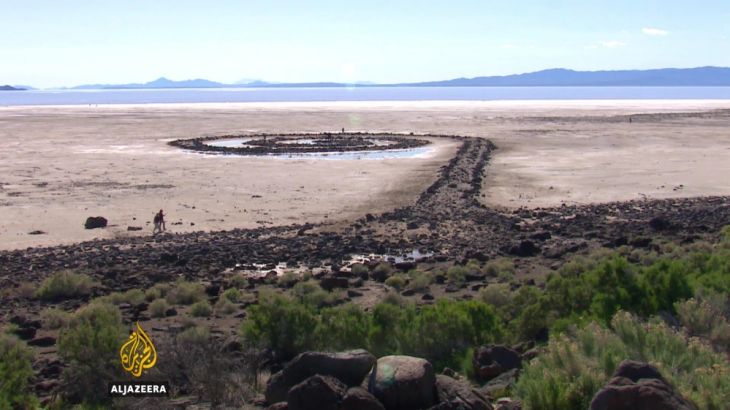Utah’s Great Salt Lake shrinks as water use increases
Water from the lake is being diverted to support the state’s growing population at the expense of the environment.

Utah, USA – The Great Salt Lake in the US state of Utah, the largest of its kind in the western hemisphere, has receded 48 percent since 1847 as a result of increased water use.
The lake’s economic value is estimated at $1.32bn a year, which includes revenue from lakeside recreation, mineral excavation and harvesting of brine shrimp.
Keep reading
list of 4 itemsPhotos: Heartbreak in Zimbabwe park – Elephants’ desperate hunt for water
Photos: Natural disasters that plagued the world in 2023
‘Everything is dead’: How record drought is wreaking havoc on the Amazon
About 7.5 million birds from 257 species use the lake each year for breeding and migration.
However, today about 1,400sq km of lake bed are exposed. Water from the lake is increasingly being diverted to support the state’s growing population.
John Cavitt, a zoology professor, says the population prefers making use of the water despite the environmental impact that is taking a toll on the lake and the nearby city.
“Most of the people in northern Utah view water that travels to the Great Salt Lake as wasted – water that cannot be used once it’s there,” he said.
As a result of the exposed lake beds, toxic minerals are swirling in the dust and blowing into Salt Lake City, 24km away.
Wayne Wurtsbaugh, an inland water scientist, said for all the toxic dust storms and losing all the birds, the increased water use has its benefits.
“There’s trade-offs – you get some more water, you grow more crops, and you’re able to have massive lawn in front of your house and you’re able to water it all the time,” he said.
The Great Salt Lake initially formed through precipitation and rivers fed by melting mountain snow.
Scientists say increasing water use may contribute to its complete disappearance in a matter of decades if action is not taken.